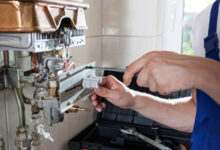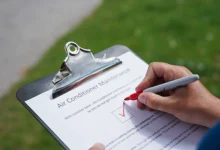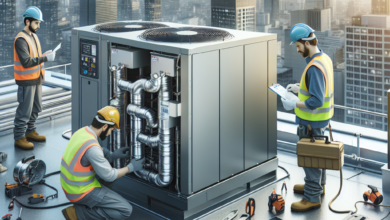Common Mistakes to Avoid During HVAC Installation
HVAC Installation – Installing a heating, ventilation, and air conditioning (HVAC) system is a significant investment for any homeowner or business. It is crucial to ensure that the installation process is done correctly to maximize the system’s efficiency, performance, and lifespan. Unfortunately, there are common mistakes that occur during HVAC installation that can lead to various issues down the line. In this article, we will explore these mistakes and provide valuable insights on how to avoid them.
1. Improper Sizing
One of the most common mistakes during HVAC installation is improper sizing. It is essential to choose the right-sized HVAC system for your space. If the system is too small, it will struggle to cool or heat the area adequately, leading to increased energy consumption and reduced comfort. On the other hand, an oversized system will cycle on and off frequently, resulting in inefficient operation and unnecessary wear and tear on the equipment.
To avoid this mistake, it is crucial to perform a load calculation to determine the appropriate size of the HVAC system for your specific needs. Factors such as square footage, insulation, windows, and climate should be considered during this calculation. Consulting with a professional HVAC contractor can help ensure accurate sizing.
2. Poor Ductwork Design
The design and installation of ductwork play a significant role in the overall performance of an HVAC system. Poorly designed ductwork can lead to airflow issues, uneven temperature distribution, and increased energy consumption. It is essential to avoid common mistakes such as using incorrect duct sizes, improper sealing, and inadequate insulation.
Proper ductwork design involves calculating the correct size and layout of the ducts, ensuring proper sealing to prevent air leaks, and insulating the ducts to minimize heat gain or loss. Hiring a professional HVAC contractor with expertise in ductwork design can help avoid these mistakes and optimize the system’s performance.
3. Incorrect Refrigerant Charge
Another common mistake during HVAC installation is an incorrect refrigerant charge. The refrigerant is responsible for absorbing and releasing heat, allowing the HVAC system to cool or heat the air. If the refrigerant charge is too low or too high, it can lead to reduced efficiency, increased energy consumption, and potential damage to the compressor.
It is crucial to follow the manufacturer’s guidelines and recommendations for the proper refrigerant charge. Using specialized tools and equipment, such as a refrigerant scale and gauges, can help ensure accurate charging. Regular maintenance and inspections by a professional HVAC technician can also help identify and correct any refrigerant charge issues.
4. Neglecting Proper Insulation
Insulation is a critical component of an HVAC system that is often overlooked during installation. Proper insulation helps prevent heat gain or loss, ensuring that the conditioned air remains at the desired temperature. Neglecting insulation can result in energy wastage, reduced comfort, and increased strain on the HVAC system.
Insulation should be installed in various areas, including walls, ceilings, floors, and ductwork. The type and thickness of insulation should be chosen based on the specific requirements of the space. Consulting with an insulation specialist or an HVAC contractor can help determine the appropriate insulation materials and techniques for your installation.
5. Lack of Proper Airflow Management
Airflow management is crucial for the efficient operation of an HVAC system. Poor airflow can lead to reduced comfort, uneven temperature distribution, and increased energy consumption. Common mistakes include improper placement of supply and return vents, blocked or obstructed vents, and inadequate air balancing.
During HVAC installation, it is essential to ensure proper placement and sizing of supply and return vents to optimize airflow. Regular maintenance, including cleaning or replacing air filters, is necessary to prevent blockages. Additionally, air balancing, which involves adjusting dampers and registers to achieve even airflow throughout the space, should be performed by a professional HVAC technician.
6. Skipping Regular Maintenance
Regular maintenance is often overlooked after HVAC installation, leading to various issues in the long run. Neglecting maintenance can result in reduced efficiency, increased energy consumption, and premature system failure. It is crucial to follow the manufacturer’s recommended maintenance schedule and perform routine tasks such as filter cleaning or replacement, coil cleaning, and lubrication of moving parts.
Hiring a professional HVAC technician for regular maintenance can help identify and address any potential issues before they escalate. Regular maintenance not only ensures optimal performance but also extends the lifespan of the HVAC system, saving you money in the long term.
Summary
Proper HVAC installation is essential to ensure optimal performance, energy efficiency, and comfort. By avoiding common mistakes such as improper sizing, poor ductwork design, incorrect refrigerant charge, neglecting insulation, lack of proper airflow management, and skipping regular maintenance, you can maximize the lifespan and efficiency of your HVAC system.
Consulting with a professional HVAC contractor, following manufacturer guidelines, and investing in regular maintenance are key steps to avoid these mistakes. By doing so, you can enjoy a comfortable indoor environment while minimizing energy consumption and reducing the likelihood of costly repairs or replacements.









